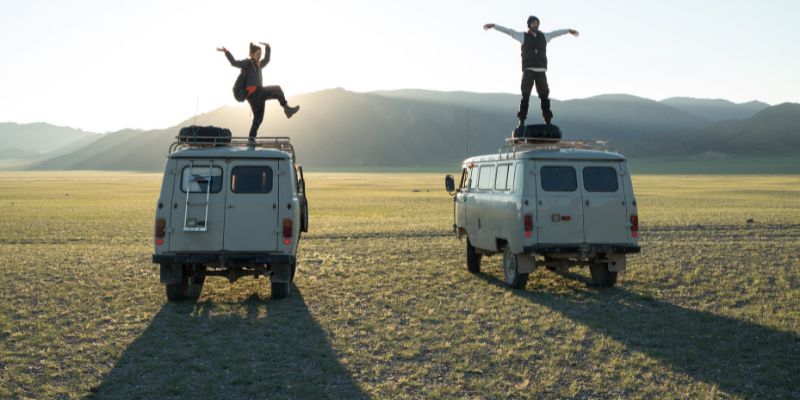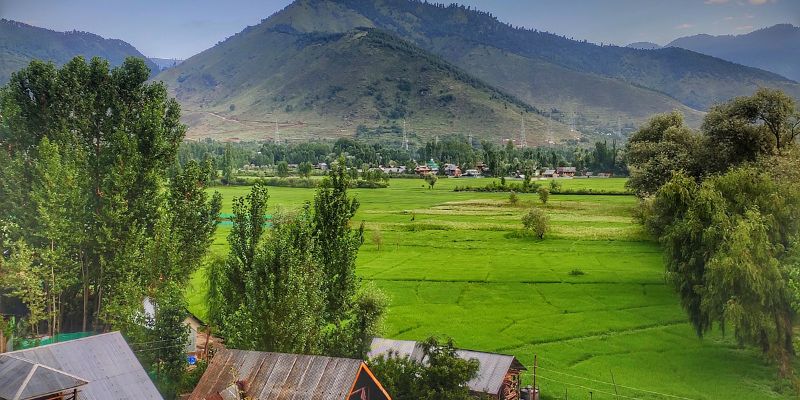Chandigarh To Spiti Valley Tour: An Ultimate Guide
Oct 25, 2023 By Sean William
Spiti Valley is one of India's coldest desert mountain valleys in Himachal Pradesh's northeast. This region is between Tibet and India. This thinly populated valley on the Tibetan Plateau is home to a wealth of Buddhist culture.
There is minimal vegetation, snow-capped mountains, and many undiscovered treasures. Spiti is a great alternative to the other Himachali cities because it is not overrun with tourists. Spiti Valley is a great example of an "off-beat journey" since it offers visitors the chance to see some of the world's highest passes, ancient monasteries, and crystal blue lakes without the distraction of modern technology.

When To Visit Spiti Valley?
Between March and June, Spiti is at its most beautiful. March through June in Spiti are ideal for anyone looking for a relaxed holiday, with temperatures ranging from zero to one hundred fifty degrees Celsius. Spiti's winters are only for the brave.
During the winter, the Manali-Kaza highway is closed; thus, reliable road access is limited. A snow leopard adventure is one of the most exciting things to do in the winter. Since persistent heavy rainfall, followed by landslides and hazardous roads, may significantly dampen your holiday spirit, you should try to avoid booking a trip to Spiti during the monsoon months (July-September).
How to Get Ready?
After settling on a departure date, the next major decision is how to get ready for the trip. Simply picking up and leaving doesn't work in Spiti Valley.
You should give careful thought to the whole trip and pack properly. Suitable attire, a well-maintained vehicle, and all the necessities for the journey must be packed and brought along.
Places to Visit in a Spiti Valley Tour:
Some of the highlights of Spiti Valley are listed here.
Chango:
Apples from Chango are the greatest in all of Spiti. There are 108 of the earliest Buddhist temples in Chango.
Nako:
Nako, Kinnaur, is situated in the Hangrang Valley. This picturesque town is home to the historic Nako Monastery. It's only a short stroll from Nako village to the picturesque Nako Lake.
Gue:
The hair and fingernails of a mummified Lama found during excavation in Gue are still growing—quite a charming town packed with intriguing history.
Tabo:
World Heritage List–recognized Tabo Gompa. The Himalayan Tabo Monastery has been compared to the Indian Ajanta. Massive Gompa adorned with beautiful wood carvings and plaster Bodhisattva figures.
Dhankar:
Dhankar Gompa, a monastery erected over 1200 years ago, is perched on a cliff overlooking a river below. The Monastery enjoys a breathtaking vantage point from an impossible height.
Kungri:
The largest and most significant of Pin Valley is monasteries. The 600-year-old Ugyen Sanga Choling Gompa is home to vibrant murals of guardian deities. The same building is also home to a massive new monastery and museum.

How to Reach Spiti Valley from Chandigarh?
There is no nonstop bus service between Chandigarh and Spiti Valley. From Chandigarh, you can take a bus to Shimla, Manali, or Reckong Peo and then transfer to a bus in Kaza. HRTC buses leave Chandigarh often for all three of these locations.
Leaving Chandigarh at 7:50 PM, a semi-deluxe HRTC bus travels to Reckong Peo, arriving at 7:30 AM the next morning. The price per passenger is Rs. 780, and the seats are slightly more comfortable than those on regular buses. In total, the trip takes 14 hours.
Easiest Way to Travel:
If budget-friendly, a private cab is the best option to get to Spiti. This way, you may go at your own pace, take breaks anywhere, and avoid bad roads. If a taxi is too expensive, you can take public transportation or your car, which are both easy.
Routes for Spiti Valley:
Spiti Valley may be reached from either Manali or Shimla. After spending a day in Manali for acclimatization, the journey from Manali to Spiti takes about 12-14 hours. In contrast, the journey from Shimla to Spiti takes about 2 days, including a stop in Kalpa or Reckong Peo.
Where to Stay in Spiti?
Traveling involves choosing accommodations based on affordability, comfort, location, and other variables. Hotels, guesthouses, campgrounds, dhabas, homestays, and tents are in Losar, Spiti, etc.
In the tourist season, reputable guest houses and hotels may be full, so book ahead or choose a homestay in Spiti with all the basics, perfect for hikers or lone travelers. Choose Chandratal for camping! Before traveling, discuss safety, food, restrooms, and fellow travelers with your guide.
What To Buy In Spiti?
Vacationers prioritize souvenir shopping. What to bring home from this colorful trip? Himachal Pradesh is known for handicrafts. Woodwork, paintings, jewelry, spices, roasted barley, barley powder, mufflers, socks, sweaters, and shawls are popular purchases. You can buy many religious goods in Shimla, Manali, and Spiti.
Tibetan artifacts, including beads, flags, bamboo infant cradles, buddha sculptures, and finely carved copper and brass singing bowls, claimed to heal, are found in this Buddhist region. Pashmina shawls, sweaters, vivid skirts, multicolored Kinnauri jootis and topis, Tibetan and Pahari local silver and stone jewelry, wall hangings, paintings, metal and woodwork crafts, carpets, and rugs are just a few examples!
How To Prepare For A Valley Trip?
Planning for Spiti Valley needs more than packing a bag and departing. High-altitude climbs in northeastern India's snow-capped mountains require woolen clothes and supplies. Light layers may be needed during the day, and thermals or thick jackets at night.
Torch, medicines, sunscreen, lip balm, sanitizers, hygiene, photography gear, chargers, and power banks are also needed. High altitudes typically have poor mobile connectivity. In some places, BSNL, Airtel, and Vodafone work.
Conclusion:
Spiti means "the middle land," which refers to its location between Tibet and India. The varied topography and extreme weather can be intimidating, but stick with us! Please allow us to extol the virtues of the Spiti Valley and convince you that a trip there is a must.
-
![]() Attractions
AttractionsTop 5 places to visit in kashmir
Juliana Daniel Oct 28, 2023
-
![]() Attractions
AttractionsFun Places In Pune And Around That Will Take Your Spirits Up High
Sean William Nov 09, 2023
-
![]() Destinations
DestinationsBest Small Towns in Germany, From Charming Medieval Villages to Idyllic Mountain Escapes
Sean William Dec 15, 2023
-
![]() Destinations
DestinationsEverything About Costa Rica's Amazing Rivers
Juliana Daniel Jan 19, 2024
-
![]() Guides
GuidesBest Biking Tours in Nainital 2023
Sean William Dec 24, 2023
-
![]() Guides
GuidesUnveiling the Myths Associated with Bharat Milap Temple
Sean William Feb 24, 2024
-
![]() Guides
GuidesThe Best 4 Road Trips From Delhi To Vaishno Devi
Sean William Mar 12, 2024
-
![]() Destinations
DestinationsUncover the essence of Himachal's diverse culture
Juliana Daniel Jan 08, 2024







